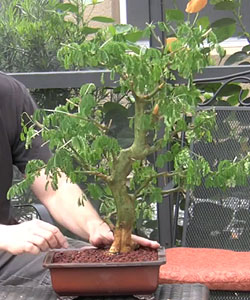
In this post, I will go over the process of taking pre-bonsai material and turning it into a beautiful bonsai. If you are a beginner and just starting in bonsai, this is a perfect step-by-step tutorial for you.
You will learn the repotting process, root reduction, and foliage trimming. This is a first step in making a bonsai from pre-bonsai material.
This Brazilian Rain Tree, scientific name Pithecellobium tortum, was started by air layering technique. After separating the new tree from the old one and giving it one year to establish, it is ready to be made into a bonsai. Spring is a great time for repotting and root trimming.
Tools you will need:
- New bonsai container – This tree is currently in a nursery pot and we need to transfer it to a new bonsai pot.
- Shears – Regular shears that will be used to trim branches and roots.
- Bonsai Wire Cutters – You will need to cut wire with these.
- Root rake – You will use it to get out the soil of the roots.
- Bonsai soil mix – I recommend using a good quality bonsai soil mix.
- Mesh – Will be used to cover holes in the container.
- Wire – Will be used to wire the tree to the new pot.
Here is a step-by-step video
Step 1: Remove the soil
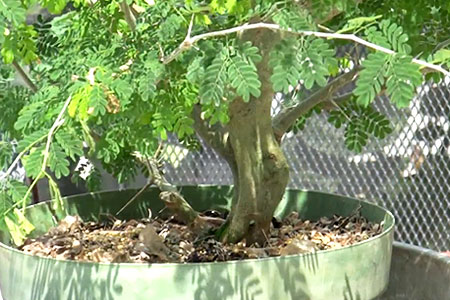
Remove the tree out of the nursing pot. As you can see it developed a lot of roots and it has been in the nursery mix for only a year. It was planted in the nursery mix to promote root growth.
Since our goal is to thicken the trunk, we need to promote the growth of the long fat roots. Once you plant a tree into the bonsai soil mix, it will start to develop more feeder roots closer to the trunk.
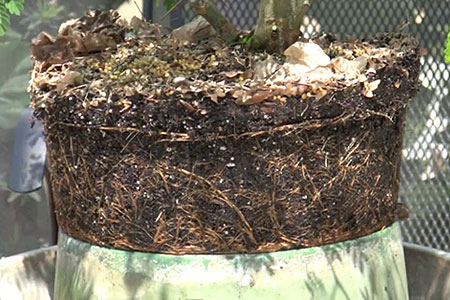
Start by taking the soil off the top with a root rack. This tree has been air-layered. As a result, it will not have that many thick roots compared to the tree you get at the store. There was not enough time for them to develop.
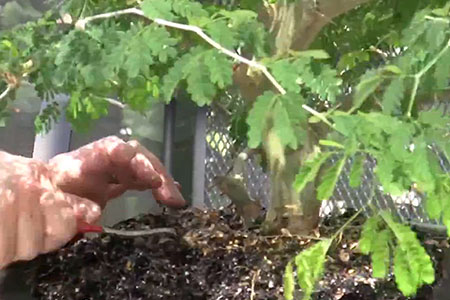
Next, remove as much soil as you can from the bottom of the plant. After you’ve removed the soil, rinse the root with a garden hose.
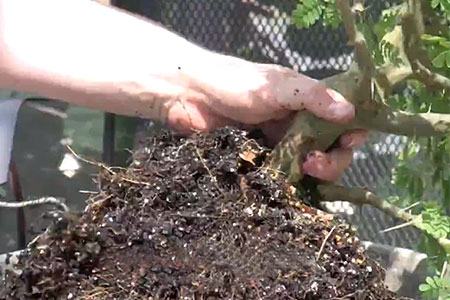
Step 2: Root trimming
Many beginners get confused when it comes to roots. They are not sure what are the main roots and what are feeder roots. If you look at the photo below, you can see the thick root with smaller roots growing on the sides.
Those small roots are the feeder roots. Because this plant has been growing in the nursery soil, it has a longer distance between feeder roots along the thick root. After planting it into the bonsai mix, the distance will decrease and the feeder roots will be closer to the trunk.
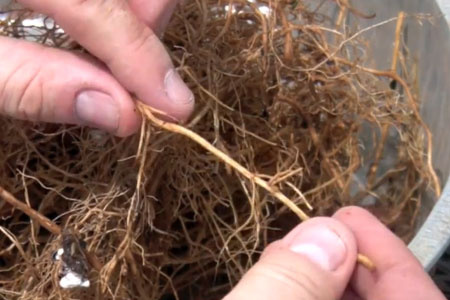
Next step, remove all the small roots near the trunk. We don’t need them anyway since we have a lot of roots at the base of the tree. Use shears to trim those small roots near the trunk.
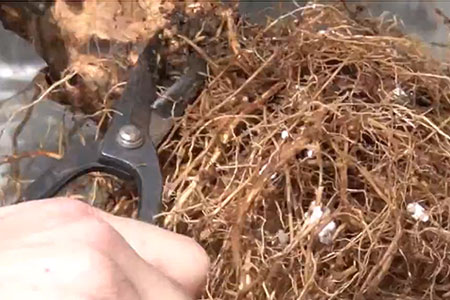
By exposing the bottom of the trunk, you will have a larger base. And as you know for each inch wide you can go 6 inches tall. So, the larger the base, the taller the tree you can have. Also, trim very long bottom roots. This will promote roots to split.
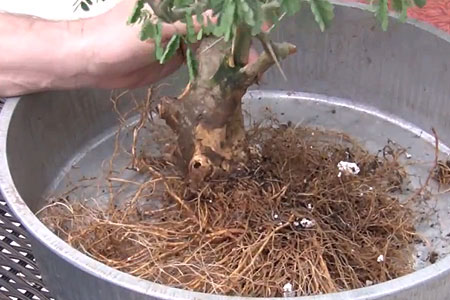
Step 3: Trim foliage
In this step, you want to remove the foliage so you can get this tree into a bonsai pot. Leave the branches where they are. You will come and remove branches later when you decide how you want to style this tree.
Trim the ends of the branches with your shears. You want to shorten all of the branches to a reasonable size. If you see that the branch is extending too far, clip it right above the node.
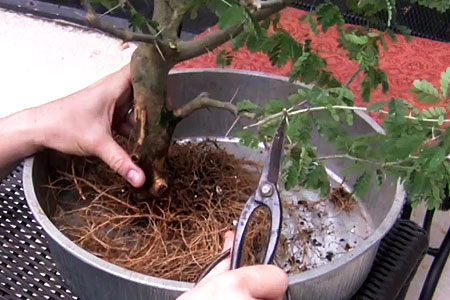
Brazilian Rainforests produce very long shoots, especially in the spring. Since this is a tropical tree, you want to make sure the temperature in the winter doesn’t get lower than 45 F. This kind of tree doesn’t like cold at all.
In the evenings you can see it will wilt a little. There is nothing wrong with the tree. They will pop back up when the sun is up. If you underwater the tree, the leaves will get droopy. But as soon as you water it, they will get alert again.
Since you will be removing a lot of roots, you also have to remove the foliage otherwise the tree would not be able to support it. When removing foliage remember to keep branches longer at the bottom and shorter at the top.
Don’t cut too close the to node, leave some space. Otherwise, if you cut it on the other side, the branch will die back to the next node.
The goal is to clean up the tree and get rid of long shoots that are not going to be part of any style. We are not styling it at this point.
You want to make it manageable and get into the bonsai pot. At that point, you can look at it and see the line of the tree and see how the tree going to grow and develop the tree in that direction.
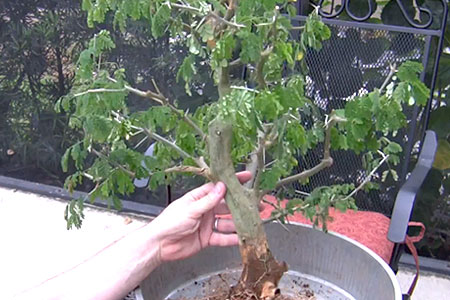
Step 4: Preparing a new pot
Cut out pieces of mesh to cover holes in the pot. For this tree, we will be using a pot with additional holes that are used for wiring the tree to the pot. Pull the wires through the holes.
Step 5: Adding the soil
Repotting creates a lot of stress for the tree since it has to survive without water or soil for a period of time while it gets trimmed. That is why you want to plant this tree in the soil as soon as possible.
Add some soil to the bottom of the pot before placing the tree. Place the tree into the pot and tie the wires around the roots. Next, add the bonsai soil mix. Use a pair of chopsticks to pack the soil to get rid of any air pockets.
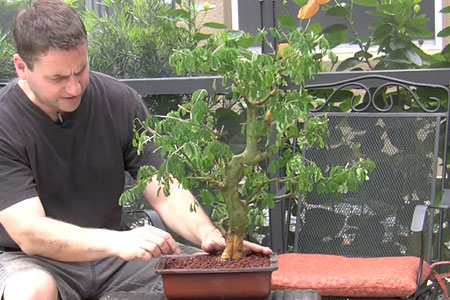
After your tree has been repotted, place it into some shade and let it recover. Place the tree in a shade and let those cuts air dry. You will see some dieback no matter what you put on those branches.
Avoid fertilizing until you see a new growth. You should water it once or twice a day depending on how dry the soil is. You want to keep the roots moist, but not wet to avoid root rot. 4 min under the sprinkler system should be enough.
Before you start styling the tree, give it some time to establish in this new pot, which is not final btw, and develop new growth. This tree will need to be repotted into an oval or round pot where it can be centered.
Related articles:
